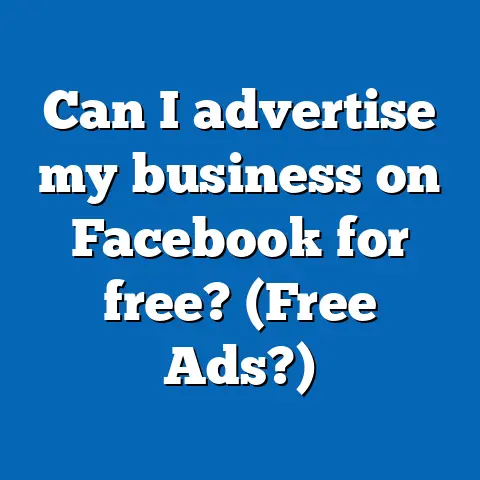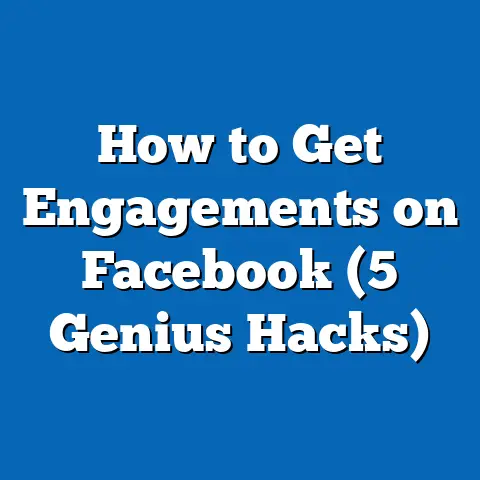Create Good Facebook Ads (3 Copywriting Laws)
Imagine this: you’re sipping your morning coffee, lazily scrolling through your Facebook feed. Suddenly, an ad appears that seems to speak directly to you. Not just because of its vibrant visuals, but because the words resonate with something deep inside. It feels personal, almost like the advertiser peered right into your thoughts. You hesitate for a moment, then click, drawn in by the compelling message. Creating Facebook ads that elicit this kind of reaction isn’t about luck—it’s about understanding and applying a few fundamental copywriting laws.
What We’ll Cover
- Crafting a Powerful Hook: Techniques to captivate and hold attention.
- Clear and Concise Messaging: How to communicate effectively without losing impact.
- Creating Urgency and Value: Strategies for motivating immediate action.
My Facebook Ad Journey
Let me take you back to when I launched my first Facebook ad campaign. I remember feeling both excited and nervous, unsure of how my efforts would translate into results. I was overwhelmed by the numerous options and metrics presented on the platform. Initially, I thought incorporating every feature would lead to success, but I quickly learned that simplicity and focus were key.
After several trials and errors, I discovered that compelling copy was the linchpin in driving engagement and conversions. The experience taught me invaluable lessons about audience connection and message clarity. Now, let’s delve into those three transformative copywriting laws that reshaped my approach to Facebook advertising.
Crafting a Powerful Hook
Why Hooks Matter
In a world where attention spans are shrinking, capturing interest within the first few seconds is crucial. Your hook is the gateway to your ad—the first impression that can make or break your campaign’s success. Think of it like meeting someone new; you want to leave them curious and wanting to know more.
Finding Your Hook
To identify a compelling hook, ask yourself: What sets my product or service apart? How does it address a problem or satisfy a need? Here’s how you can craft an unforgettable hook:
- Identify the Pain Point: Understand what challenges your audience faces.
- Offer a Solution: Clearly articulate how your product or service resolves this issue.
- Use Emotional Triggers: Leverage emotions such as curiosity, fear, or excitement to engage.
Example
Imagine you’re marketing eco-friendly water bottles. Instead of a generic “Buy our bottles,” consider “Tired of contributing to plastic waste? Discover our eco-friendly solution!”
Experiment with Language
Language experimentation is vital when crafting hooks. Different audiences respond to different stimuli, so don’t hesitate to test various approaches. Employ A/B testing to determine which hook resonates best with your target demographic.
Deep Dive: Emotional Triggers
Understanding human emotions is key to crafting effective hooks. People are driven by emotions more than logic in many buying decisions. Here’s how you can leverage different emotions:
- Curiosity: Use intriguing questions or statements that make users want to learn more. “What’s the secret behind our zero-waste bottles?”
- Fear: Highlight potential negative outcomes that your product can prevent. “Stop wasting money on disposable bottles!”
- Excitement: Create anticipation for something new or groundbreaking. “Join thousands who’ve switched to sustainable hydration!”
Real-Life Application
Consider this real-life application: A company selling eco-friendly cleaning products used the hook “What’s lurking in your cleaning supplies?” This question sparked curiosity and concern, leading users to click through and discover more about healthier alternatives.
Clear and Concise Messaging
Simplicity is Key
Once you’ve captured attention with your hook, maintaining interest requires clarity and brevity. Avoid jargon and superfluous language—deliver your message quickly and directly.
Steps to Achieve Clarity
- Know Your Audience: Tailor your language to suit their preferences and understanding.
- Focus on One Message: Avoid overwhelming readers with multiple points; stick to one clear idea.
- Use Bullet Points or Short Sentences: Facilitate easy reading by breaking down information.
Example
Instead of: “Our innovative bottles are designed using the latest sustainable technology,” simplify it to: “Eco-friendly bottles that reduce waste.”
Visual Complementation
Pairing concise text with impactful visuals enhances comprehension and engagement. Select images or videos that reinforce your message rather than distract from it.
Deep Dive: The Art of Brevity
Brevity in messaging doesn’t mean sacrificing depth; it’s about conveying complex ideas succinctly:
- Prioritize Information: Identify what’s essential for immediate understanding.
- Eliminate Redundancies: Remove words or phrases that don’t add value.
- Active Voice: Use active voice for stronger, more direct statements.
Real-Life Application
Consider this scenario: An online course provider noticed higher engagement when they streamlined their ad copy from lengthy descriptions to succinct benefit-focused bullet points.
Creating Urgency and Value
Why Urgency Works
Urgency compels people to act promptly by leveraging the fear of missing out (FOMO). It serves as a powerful motivator when executed correctly.
Building Urgency Without Pressure
- Limited-Time Offers: Utilize phrases like “Only today” or “Ends soon” to create urgency.
- Scarcity: Highlight limited stock or exclusive availability.
- Highlight Benefits: Clearly communicate why immediate action is beneficial.
Example
“Only 50 bottles left! Get yours before they’re gone!”
Balancing Urgency and Value
While urgency is effective, ensuring value remains paramount. Clearly articulate why the offer matters—what benefits does it provide?
Deep Dive: Constructing Value Propositions
Crafting compelling value propositions involves understanding both tangible benefits (e.g., cost savings) and intangible benefits (e.g., peace of mind):
- Tangible Benefits: Quantifiable advantages like price reductions or improved efficiency.
- Intangible Benefits: Emotional rewards such as increased confidence or satisfaction.
Real-Life Application
A travel agency successfully utilized urgency by offering exclusive early-bird discounts on vacation packages, clearly outlining both the monetary savings and unique experiences travelers would gain.
Advanced Strategies for Facebook Ads
Beyond these foundational laws lie advanced strategies that further enhance ad performance:
Leveraging User-Generated Content
User-generated content (UGC) adds authenticity and credibility to your ads:
- Encourage Reviews and Testimonials: Request feedback from satisfied customers.
- Showcase Real Experiences: Share user stories or photos featuring your product.
- Create Community Engagement: Foster interaction among users through comments or shares.
Example
A skincare brand featured customer testimonials in their ads showcasing before-and-after results alongside personal stories about improved skin confidence.
Personalization at Scale
Personalization increases relevance, making users feel valued:
- Dynamic Content: Use dynamic content features allowing personalized messaging based on user behavior or demographics.
- Custom Audiences: Segment audiences into specific groups based on interests or interactions.
- Retargeting Campaigns: Reach out specifically to users who have previously engaged but not converted.
Example
An e-commerce store utilized retargeting campaigns displaying products left in abandoned carts alongside personalized discount offers tailored specifically for those items.
Optimizing Ad Placements
Strategic placement optimization ensures maximum visibility:
- Split Testing Placements: Test different placements (e.g., News Feed vs Stories) across devices (desktop vs mobile).
- Analyze Performance Metrics: Regularly review metrics like CTR (Click-Through Rate), CPC (Cost Per Click), conversion rates etc., identifying top-performing placements.
- Adjust Budgets Accordingly: Allocate budgets towards high-performing placements while reducing spend on underperformers.
Example
A fashion retailer noticed higher engagement from Instagram Stories compared to other platforms; they redirected budget allocation accordingly resulting in increased conversions.
Practical Tips & Best Practices
Here are some practical tips drawn from experience:
- Use Strong CTAs: Guide users with clear call-to-action buttons like “Shop Now” or “Learn More.”
- Leverage Social Proof: Include testimonials/reviews building trust among potential customers.
- Optimize for Mobile: Ensure ads appear visually appealing across smaller screens given most traffic originates from mobile devices today.
- Monitor Performance Regularly: Continuously track metrics refining strategies over time based upon data insights gathered during campaign execution phases
- Stay Updated: Keep abreast of platform changes/new features ensuring alignment between current trends/best practices within industry standards
Conclusion & Actionable Takeaways
Armed with these strategies now at hand—you’re well-equipped towards creating compelling Facebook ads capable capturing attention effectively communicating messages driving desired actions ultimately leading successful outcomes!
Remember:
- Start strong utilizing captivating hooks addressing pain points/curiosities
- Maintain clarity simplicity throughout messaging avoiding unnecessary complexity
- Balance urgency/value proposition encouraging timely responses emphasizing benefits offered
- Experimentation remains key continually testing optimizing various aspects ensuring maximum impact achieved overall!






